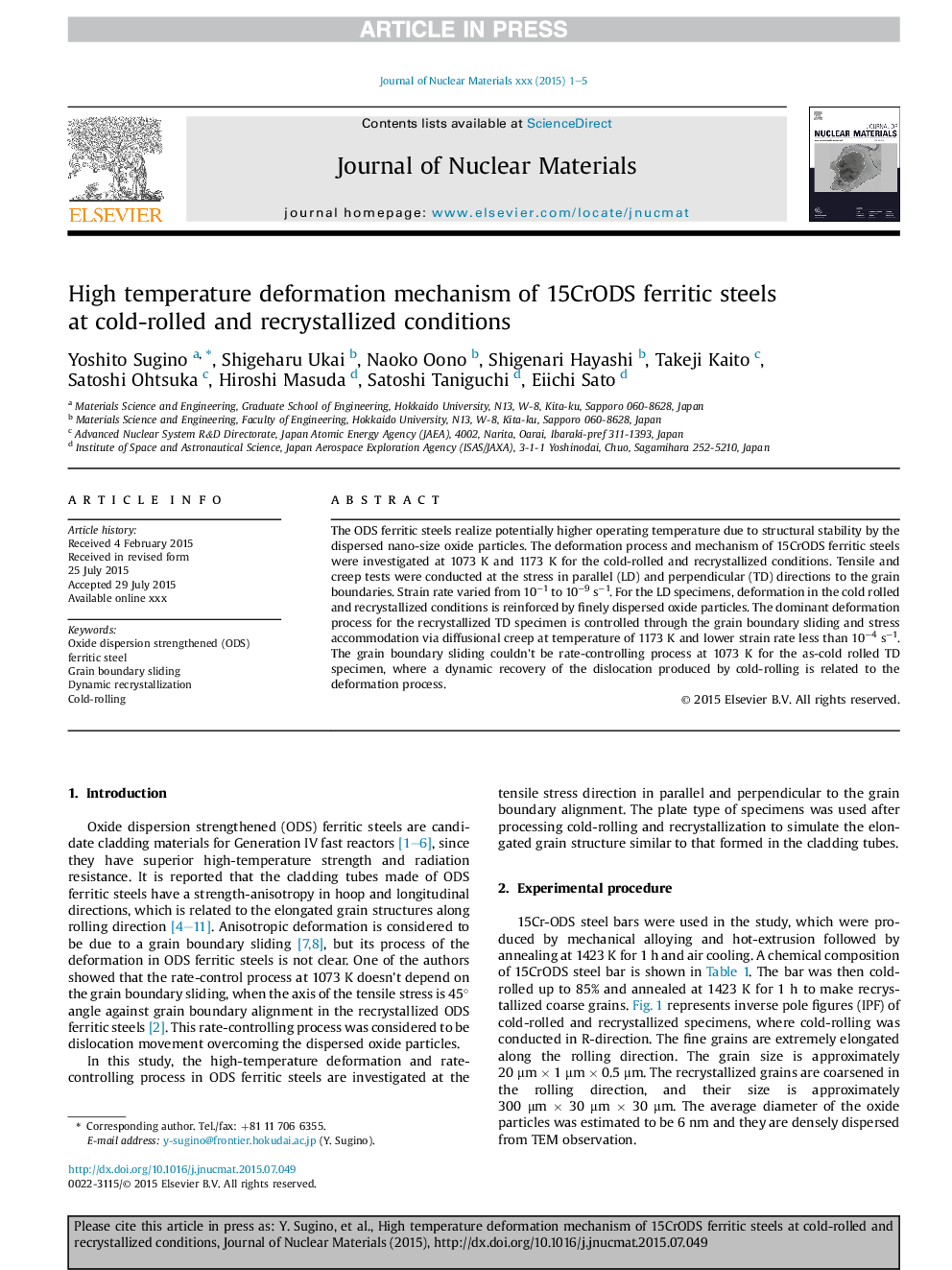| Article ID | Journal | Published Year | Pages | File Type |
|---|---|---|---|---|
| 7965092 | Journal of Nuclear Materials | 2015 | 5 Pages |
Abstract
The ODS ferritic steels realize potentially higher operating temperature due to structural stability by the dispersed nano-size oxide particles. The deformation process and mechanism of 15CrODS ferritic steels were investigated at 1073Â K and 1173Â K for the cold-rolled and recrystallized conditions. Tensile and creep tests were conducted at the stress in parallel (LD) and perpendicular (TD) directions to the grain boundaries. Strain rate varied from 10â1 to 10â9Â sâ1. For the LD specimens, deformation in the cold rolled and recrystallized conditions is reinforced by finely dispersed oxide particles. The dominant deformation process for the recrystallized TD specimen is controlled through the grain boundary sliding and stress accommodation via diffusional creep at temperature of 1173Â K and lower strain rate less than 10â4Â sâ1. The grain boundary sliding couldn't be rate-controlling process at 1073Â K for the as-cold rolled TD specimen, where a dynamic recovery of the dislocation produced by cold-rolling is related to the deformation process.
Related Topics
Physical Sciences and Engineering
Energy
Nuclear Energy and Engineering
Authors
Yoshito Sugino, Shigeharu Ukai, Naoko Oono, Shigenari Hayashi, Takeji Kaito, Satoshi Ohtsuka, Hiroshi Masuda, Satoshi Taniguchi, Eiichi Sato,
